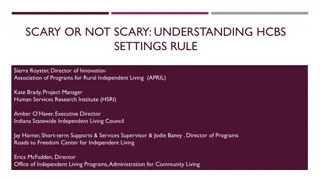
Understanding Different Types of Partnerships in Business
Learn about the characteristics of partnerships and identify terms like Partnership, General Partnership, Limited Partnership, and Limited Liability Partnership. Explore the advantages and disadvantages of sole proprietorships and understand how partnerships differ, including General Partnership and Limited Partnership structures. Discover the unique features of Limited Liability Partnerships and the concept of liability in business partnerships.
Download Presentation

Please find below an Image/Link to download the presentation.
The content on the website is provided AS IS for your information and personal use only. It may not be sold, licensed, or shared on other websites without obtaining consent from the author. If you encounter any issues during the download, it is possible that the publisher has removed the file from their server.
You are allowed to download the files provided on this website for personal or commercial use, subject to the condition that they are used lawfully. All files are the property of their respective owners.
The content on the website is provided AS IS for your information and personal use only. It may not be sold, licensed, or shared on other websites without obtaining consent from the author.
E N D
Presentation Transcript
Partnerships In this lesson, students will be able to identify characteristics of partnerships. Students will be able to identify and/or define the following terms: Partnership General Partnership Limited Partnership Limited Liability Partnership
Do Now What are the advantages and disadvantage of a sole proprietorship? + Make all the decisions - Unlimited personal liability.
Unlike a sole proprietorship, a partnership is a business owned and operated by two or more people.
General Partnership The most common type of partnership is a general partnership. In a general partnership, all partners share equally in responsibility and liability. In a general partnership, all partners are responsible for the business.
If you form a general partnership, your partner s actions directly affect you.
Limited Partnership Another type of partnership is a limited partnership. In a limited partnership, one partner must be a general partner or responsible and liable for the business. The other partners are limited partners.
The limited partner only contributes money and has limited liability.
Limited Liability Partnership Only some individuals are allowed to form such partnerships. Doctors, lawyers, and accountants are allowed to form limited liability partnerships. In these partnerships, liability is limited.
In limited liability partnerships (LLPs), each partner is a limited partner and only responsible for his own actions.
Liability It is important to remember that liability is the legal obligation to pay all debts. In the three different forms of partnerships, liability differs. The varying degrees of liability determine the various types of partnerships.
General partners share equally in responsibility and liability.
In a limited partnership, one partner must be fully liable and responsible.
The limited partner only contributes money and has limited liability.
In limited liability partnerships, all partners have limited liability in some situations.
Questions for Reflection: List the three types of partnerships. Who is liable and responsible in a general partnership? How do limited partnerships function? Why would a partner chose to be a limited partner? Who is allowed to form a limited liability partnership? Why?






















